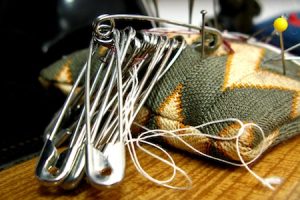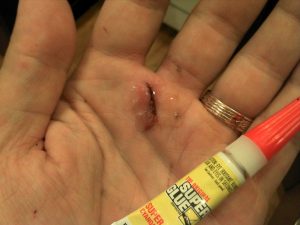
Safety pins for preparedness, medical and fishing
Preparedness Gold Hiding in Plain Sight: Common Items That Could Save Your Life
Think preparedness requires expensive gear and specialty items? Think again. Some of the most valuable preparedness tools are probably sitting in your cabinets right now, masquerading as everyday items. Let’s look at verified, tested uses for common household items that could make a real difference in an emergency.
The Power Players in Your Pantry and Drawers
Let’s start with that unassuming gallon of white vinegar under your sink. This powerhouse of practicality isn’t just for cleaning – its 5% acetic acid content makes it a reliable disinfectant and preservative. Beyond keeping your pickles fresh, vinegar can safely clean wounds (when properly diluted), preserve food, and even help maintain your lead-acid batteries by removing corrosion from the terminals. Its indefinite shelf life and multiple uses make it a preparedness essential.
That dental floss in your bathroom? It’s not just for keeping your dentist happy. A single container of dental floss provides hundreds of feet of incredibly strong, waterproof cordage. The waxed variety has been tested to hold weights up to 30 pounds – more than enough for emergency repairs, creating fishing line, or securing lightweight items. Plus, the wax coating makes it an effective fire starter when shredded.
Aluminum foil, particularly the heavy-duty variety, earns its place in your preparedness supplies. Beyond cooking, it’s a proven signal mirror material, can create a focused cooking surface when shaped into a parabolic reflector, and serves as an effective ground pad for insulation. When folded multiple times, it creates surprisingly sturdy emergency containers.
Those boxes of zip ties in your garage? Their load-bearing capacity is actually documented – even small ones can typically hold 18-20 pounds when properly applied. The larger varieties can secure heavy equipment and create reliable temporary repairs. Just remember they’re a one-time use item, so store extras.
 Duct tape has earned its reputation through tested performance. Quality duct tape has a tensile strength of 45-50 pounds per inch width. It can create impromptu shelter repairs, emergency bandage securing (over proper dressings), and even temporary boot repairs that can last for days or weeks.
Duct tape has earned its reputation through tested performance. Quality duct tape has a tensile strength of 45-50 pounds per inch width. It can create impromptu shelter repairs, emergency bandage securing (over proper dressings), and even temporary boot repairs that can last for days or weeks.
That bottle of hand sanitizer with at least 60% alcohol content isn’t just for killing germs. Its high alcohol content makes it a reliable fire starter, even in damp conditions. In emergencies, it can be used to disinfect small wounds and clean surfaces, though it should never be used on deep or serious injuries.
Safety pins, particularly stainless steel ones, are remarkably strong and versatile. They can secure damaged clothing, hold emergency bandages, or even serve as emergency fishing hooks. Unlike straight pins, their locking mechanism makes them reliable for long-term use.
Super glue (cyanoacrylate adhesive) has legitimate emergency uses, though it’s important to note that regular super glue is NOT the same as medical adhesives like Dermabond, which are specifically formulated for medical use. While commercial super glue can handle many emergency repairs to equipment and gear, save the wound care for proper medical supplies.
Proper Storage and Testing
The effectiveness of these items depends greatly on proper storage:
- Keep vinegar in its original container – it’s already perfectly packaged
- Store dental floss and zip ties in airtight containers to prevent degradation
- Maintain duct tape at room temperature – extreme temperatures reduce its effectiveness
- Check super glue seals regularly – once opened, its shelf life decreases significantly
- Keep hand sanitizer away from high heat due to its alcohol content
Important Cautions
While these items are valuable additions to your preparedness supplies, they’re not replacements for proper emergency gear:
- Hand sanitizer isn’t a replacement for proper first aid supplies
- Super glue isn’t a substitute for medical bandages or proper wound care
- Dental floss isn’t a replacement for proper cordage in life-safety situations
 Testing Is Critical
Testing Is Critical
Before relying on any everyday item for emergency use:
- Test it under controlled conditions
- Learn its limitations
- Practice your intended uses
- Store proper quantities
- Rotate items that have limited shelf life
The Reality Check
The best preparedness tools are ones you know how to use and have tested personally. While these everyday items can be valuable additions to your preparedness strategy, they should complement, not replace, your basic emergency supplies.
Remember: in a real emergency, you want proven solutions, not internet theories. Take time to verify and test any survival uses before you need them. Practice with these items regularly so you understand both their capabilities and their limitations.


